The Golden Rules of nutrition
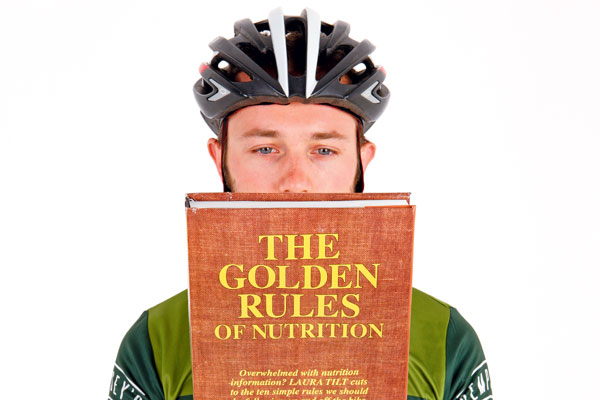
From your office colleague to the team leader at your cycling club, everyone has an opinion on what makes a good diet. Couple this with a stream of headlines touting the latest superfood, supplement scares and wonder diets, and choosing the right foods can feel like a minefield.
So where on earth do you start? Luckily, good nutrition doesn't have to be difficult or time-consuming - learn to stick with a few key rules and you'll be rewarded with improved performance and better energy levels, plus you'll be able to shed those unwanted extra kilos in the process.
Resident dietitian Laura Tilt cuts through the confusion and simplifies the science with 10 diet principles that will help you perform at your best both on and off the bike.
Golden Rules:
Rule 1: Thou shalt eat wisely pre-ride
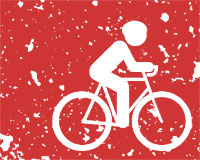
WHY: A badly timed or poorly thought-out meal can ruin your performance on the bike. Eat too much too close to getting on the saddle and you'll end up feeling sick, as blood-flow is directed away from the stomach to the working muscles, which means digestion takes a back seat.
Meals that are high in fat are slow to digest so best avoided. The same goes for high sugar and refined foods like cornflakes, sugary cereals and white bread. These can cause a spike in blood glucose which can suppress fat oxidation and result in an early bonk.
MAKE IT EASY: The ideal pre-ride meal or snack is not too heavy, and will combine slow-release carbohydrates with some protein. Good options include poached or scrambled eggs on toast, banana and peanut butter sandwich, porridge oats and milk (which can be soaked overnight with fruit and eaten cold during the summer).
If you've no time, a banana or couple of handfuls of raisins and some fluid half an hour before you set off will help to top up fuel stores.
Get The Leadout Newsletter
The latest race content, interviews, features, reviews and expert buying guides, direct to your inbox!
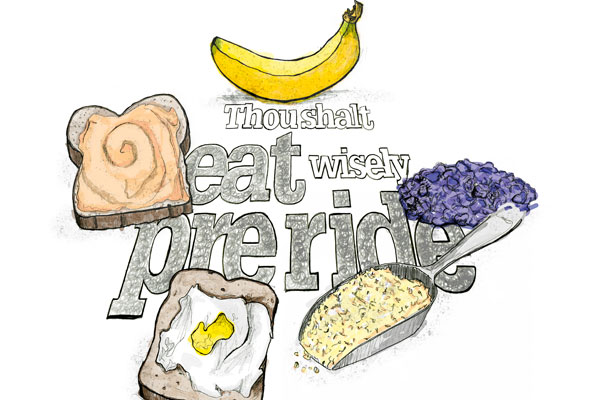
Rule 2: Thou shalt refuel on rides lasting over 60 minutes
WHY: All-out exhaustive and prolonged exercise relies on a steady source of glucose, which becomes increasingly important as exercise intensity increases.
Your body can only store enough carbohydrate (glycogen) to fuel around two hours of intense exercise, so failure to refuel on long rides will mean your training session will be over sooner than you think. In fact, next to dehydration, glycogen depletion is the primary cause of fatigue.
MAKE IT EASY: If you're riding for over 60 minutes, the goal is to consume 30-60g of carbohydrate per hour. This can be achieved with either solid food or sports products like gels and isotonic drinks.
Studies show that either is effective in delaying fatigue and boosting performance, so it comes down to personal choice, preference and gut tolerance. Many riders like to mix and match a combination of race food.
500ml of an isotonic drink will provide around 30g of carbohydrate, as will a single gel. Solid food options with 30-60g of carbohydrate include a large banana, two fig rolls, Clif Bar, Nutrigrain bar, Trek bar or a handful of raisins.
DIY drinks: Make your own isotonic beverage by mixing 200ml of squash (or fruit juice) with 800ml water and a gram of salt.
Rule 3: Thou shalt recover with protein and carbohydrate
WHY: The period after you finish riding provides a unique opportunity to kick-start the recovery process, as the body is primed to restock glycogen and repair muscle damage.
During this time, nutrients are shuttled into recovery efforts at an increased rate. Carbohydrates are needed to resynthesise glycogen, while protein provides the raw materials needed for muscle repair.
Studies also show that the addition of protein to a post-workout meal or snack can boost glycogen storage, which can improve performance if you're planning a second training session on the same day. Once again, whether you choose a specific recovery product or real food is up to you; the key is timing, so choose something that is easy to prepare and consume.
MAKE IT EASY: There's no need to become obsessive over numbers - teaming a decent portion of carbohydrate with around 20g of protein will go a long way to meeting the recovery goals for the majority of riders.
Good options include a three-egg omelette with salad and bread, a tuna sandwich or oily fish on toast. If you're short of time, a pint of milk and banana is a good on-the-go option. Specific recovery products such as For Goodness Shakes provide the recommended ratio of carbohydrate to protein in a ready-to-drink formula, which is convenient, although a bottle of chocolate milk will suffice.
The recovery 20g of protein eaten after your ride can boost recovery. Try one of these options: three eggs, 200g of cottage cheese, scoop of whey protein, or 200g of strained Greek yoghurt.
Recovery smoothie Blend one banana, a cup of frozen berries, a scoop of whey protein, 250ml of milk and a heaped spoonful of flaxseed. Blend and enjoy!
Rule 4: Thou shalt hydrate properly
WHY: After glycogen depletion, dehydration is the biggest cause of fatigue. It can cause dips in performance, delaying reaction times and increasing perceived exertion. As body temperature increases, the body sweats to release heat, which results in a loss of fluid and electrolytes. It is therefore important to drink to thirst.
MAKE IT EASY: Get in the habit of adopting regular drink breaks every 15-20 minutes and aim to start every session on the bike well hydrated. Sports drinks can be useful in hot weather, as they replace salts as well as fluid.
Studies also show that riders are likely to consume more of a flavoured beverage, so a slug of squash added to your water bottle may encourage you to drink. If you want to be exact, try weighing yourself before and after a typical training session - you're aiming to minimise the loss of body weight from fluid loss.
If you lose more than two per cent of your start weight, you may need to increase your fluid intake on the bike. A less precise but easier way to monitor hydration levels is to keep an eye on your urine - if you're well hydrated, it will be plentiful and straw-coloured
Rule 5: Thou shalt not experiment with new foods during a race
WHY: In the same way you wouldn't try out new kit on the day, experimenting with different foods during a sportive or race is a no-no. Although the gut can be ‘trained', this takes time. Trying out a new fuelling strategy on race day may result in disaster.
Studies show the gut can absorb up to 90g of carbohydrate per hour if a combination of glucose and fructose is used, but it needs to be ‘trained' to do so. Trying too much at once can overload the body's absorptive capacity, which means the excess ends up in the colon, where it can cause digestive discomfort - stomach pain!
MAKE IT EASY: As a rule of thumb, don't try any new nutrition strategies less than a month before an event. Instead, aim to try out new foods on shorter distances and then on longer rides. You need to know the rate at which your stomach is able to absorb gels, drinks or real food, and the practicality of doing so.
Rule 6: Thou shalt choose whole foods
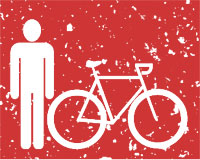
WHY: Despite more food choice and availability than ever before, we're seeing a steady increase in obesity, diabetes and other lifestyle-related conditions. Although sedentary lifestyles don't help, an increase in the consumption of processed foods and easily consumed calories is undoubtedly part of the problem.
MAKE IT EASY: We're not suggesting you become a raw-food-eating caveman, but aiming to make the majority of your meals free of processed foods will go a long way to improving the quality of your diet. If it comes in a packet with a list of ingredients that require a degree in biochemistry to decipher, chances are it's not going to do you much good.
An occasional cupcake or pint of beer isn't going to ruin you, but try to keep the 80:20 rule in mind. As a basic principle, try to base your meals around lean meats, fish, lots of colourful vegetables, fruit and nutrient-dense carbohydrates such as sweet potatoes and oats. Add a dose of healthy fats and you'll be well on the way to a good balance.
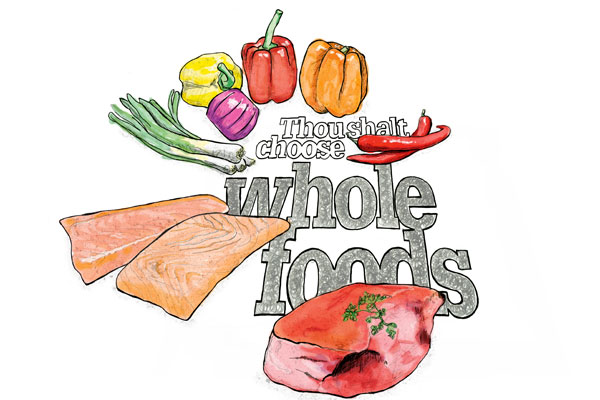
Rule 7: Thou shalt not rely on supplements
WHY: Tempting as it is to think that you can rely on a vitamin pill to right all those dietary wrongs, it's a false economy. In addition to evidence showing that habitual use of high-dose supplements can cause harm, recent research suggests that antioxidant supplements may hinder the natural adaptive processes that offset increases in oxidative stress.
Plus, there is no good evidence that supplements reduce mortality in healthy or active individuals. Bottom line: vitamin supplements are no replacement for a good diet.
MAKE IT EASY: Provided you have a balanced intake, you shouldn't need to ‘top up' with a supplement. Aim to pack as much colour into your diet as possible - dark and brightly coloured fruits and vegetables contain the highest levels of antioxidant compounds.
Include plenty of nutritious proteins (fish, dairy, meat, pulses) and carbohydrates (oats, quinoa, brown rice, lentils) and vary your intake to ensure a good intake of micronutrients. If there are any exceptions to the rule, they concern vitamin D and omega 3.
Unless you have regular exposure to the sun, a daily supplement of vitamin D is advisable, while omega 3 supplements may help regulate body composition and inflammation.
Rule 8: Thou shalt monitor energy balance
WHY: While cycling is a great calorie-burner, it doesn't give you carte blanche to eat whatever you like - an hour's cycling may burn around 600kcal, but those calories are easily replaced with a couple of handfuls of nuts.
If your goal is to lose weight and you're training regularly but not seeing any change on the scales, you need to look at your diet. Cut out ‘empty' calories first; biscuits, crisps, confectionery and alcohol are key offenders. If you're already eating well, check your portion sizes - you may be eating well but simply too much.
MAKE IT EASY: Counting the calories in every morsel is pointless, not to mention depressing. There's no need to get obsessive - you're looking for overall balance. If you're aiming to lose weight, stand on the scales no more than once a week and keep a note to monitor patterns and use a basic calorie calculator to determine your approximate needs.
If your weight is creeping up, use a food-tracking app to calculate your intake and see where you're going wrong. My Fitness Pal is free, and can be used on iPhone, desktop and Android. If you need to cut down, don't be tempted to scrimp on protein intake, as protein is vital for preserving lean mass when dieting.
Rule 9: Thou shalt not become fat-phobic
WHY: A global obsession with low-fat diets has resulted in many of us becoming unnecessarily fat-phobic. Low-fat diets tend to be high in added sugars and refined carbohydrates, and research shows they are no better for weight loss.
In fact, they may hinder it. We need dietary fat to produce hormones, maintain cell membrane fluidity and for the conduction of neurotransmitters. Plus, some micronutrients require fat for their absorption - the uptake of antioxidant beta carotene is increased in the presence of dietary fat, so don't be scared to drizzle on a little olive oil.
MAKE IT EASY: Rebalance your diet by adding healthy fat in the form of avocados, butter, extra virgin olive oil, seeds and nuts. Altering the ratio of omega 6 to omega 3 can also help to moderate inflammation. Think less omega 6 fats (vegetable and seed oils and processed foods) and more omega 3 oils from oily fish, nuts and flaxseed.
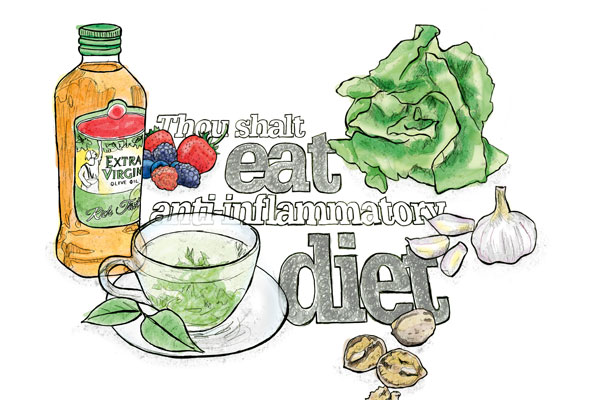
Rule 10: Thou shalt eat an anti-inflammatory diet
WHY: Experts now agree that most chronic conditions and age-related diseases are linked with long-standing inflammation. This applies to type-two diabetes, Alzheimer's, cancer, asthma and other respiratory conditions.
Although it can't offset the process completely, a diet rich in anti-inflammatory foods can help to dampen down an overactive inflammatory response. Studies show that foods rich in anti-inflammatory compounds can offset exercise-induced muscle soreness and DNA damage.
In a 2012 study from Ulster University, a daily 85g serving of watercress reduced oxidative stress in those undergoing short bursts of intense exercise.
MAKE IT EASY: Aim to work as many anti-inflammatory foods into your diet as possible. Those with proven benefits include extra virgin olive oil, berries, garlic, green tea, walnuts, leafy green vegetables and spices, particularly turmeric, ginger and cinnamon.
Aim to consume oily fish twice a week, and minimise your consumption of added sugars, cooking with oils rich in omega 6 (corn, sesame, sunflower), refined carbohydrates, processed meats and hydrogenated fats.
This article was first published in the August 8 issue of Cycling Weekly. Read Cycling Weekly magazine on the day of release where ever you are in the world International digital edition, UK digital edition. And if you like us, rate us!

Thank you for reading 20 articles this month* Join now for unlimited access
Enjoy your first month for just £1 / $1 / €1
*Read 5 free articles per month without a subscription

Join now for unlimited access
Try first month for just £1 / $1 / €1
Founded in 1891, Cycling Weekly and its team of expert journalists brings cyclists in-depth reviews, extensive coverage of both professional and domestic racing, as well as fitness advice and 'brew a cuppa and put your feet up' features. Cycling Weekly serves its audience across a range of platforms, from good old-fashioned print to online journalism, and video.
-
 Tadej Pogačar flies to dominant victory at La Flèche Wallonne
Tadej Pogačar flies to dominant victory at La Flèche WallonneSlovenian takes second win at Belgian classic ahead of Kévin Vauquelin and Tom Pidcock
By Tom Thewlis
-
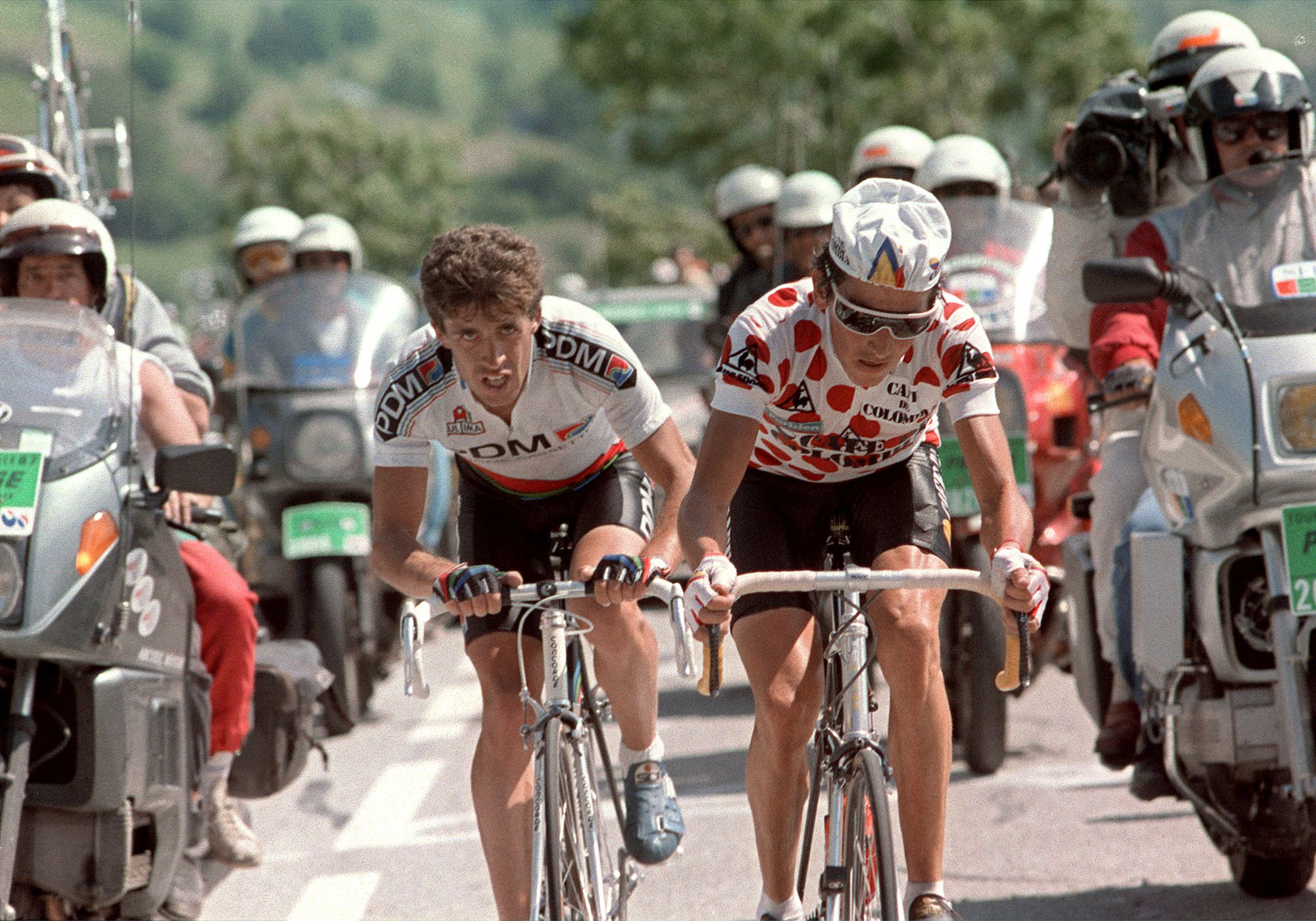 Colombian climbing star and former Vuelta a España winner Lucho Hererra could be investigated over murders of four people
Colombian climbing star and former Vuelta a España winner Lucho Hererra could be investigated over murders of four peopleA judge has called for an investigation into the former Vuelta winner who is alleged to have worked with paramilitary groups in Colombia
By Tom Thewlis